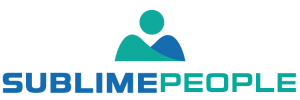Do you want to recruit and retain the best talent for your company? An employer branding strategy is the best way to get ahead of the competition and attract the best employees. Research shows that 95% of the applicants look for brand reputation before submitting applications. The reputation of companies influences both public view and potential staff. Unfortunately, very few businesses understand the importance of developing an effective brand strategy. Continue reading this article and discover the best ways to use employee branding to improve productivity.
In this Article:
What is Employer Branding
To understand the employer brand, one must first know what a brand is. A brand is the identity of a specific product, service, or company. It separates itself from other products in the market with certain characteristics that make it unique and recognizable.
The employer brand is how a company is perceived as an employer. It is the identity of a company as an employer and sets it apart from other companies in the market. You can define your employer brand by its appearance, and whether it’s a true reflection.
An employer brand must be strong to attract top talent. You can construct your employer branding from several factors, including policies and programs, rewards, and bonuses offered to current employees and former employees. If a company has a strong employer brand, it will have an easier time recruiting and keeping employees.

What Are the Benefits of Employer Branding
There are many benefits of employer branding, but some of the most important are:
- It helps you attract top talent. When you have a strong employer brand, you will attract high-quality employees. This is because potential employees will want to work for a company that has a good reputation.
- It increases employee retention. Once you have attracted top talent, you need to keep them. A strong employer brand will improve your employee turnover because they will be more likely to stay with a company that they are proud to work for.
- A powerful employer brand boosts productivity. Happy and engaged employees are more productive. When your employees are proud of your company, they will be more likely to go the extra mile to help your company succeed.
- It brings loyal customers. Employee brand or candidate experience can influence customer acquisition. Those who have not had great experiences with some companies rarely purchase products or services from them. People cancel purchases from brands that were criticized for poor employee relations. When employers have a stronger reputation for recruiting talented employees, growth is expected.
- Employer brand reflects diversity and inclusion. Companies with a clear employer branding strategy can attract diversity into their organization and boost their diversity efforts. Social networks provide an excellent opportunity for employers to display corporate and community responsibility while building a diverse workplace.
- It lowers costs. Since strong employer branding optimizes your recruitment process by attracting more candidates, companies with an established reputation also experience lower hiring costs. A bad reputation also costs an organization 10% of its workforce.

How Can You Improve Your Employer Brand?
There are several ways you can improve your employer brand:
- Create a positive work environment. Employees want to work for a company where they feel valued and appreciated. Creating a positive work environment is a great way to show your employees that you care about their well-being.
- Offer competitive pay and benefits. Employees want to be compensated fairly for their work. Offering competitive pay and benefits is a great way to show your employees that you value their contributions.
- Invest in employee development. Employees want to work for a company that invests in their development. By investing in employee development, you can show your employees that you are committed to helping them grow and succeed.
- Promote from within. Employees want to work for a company that promotes from within. Promoting from within shows your employees that you will invest in their growth and development.
What Are the Key Components of an Employer Brand?
There are three key components of an employer brand:
Reputation
The reputation of a company is the most important aspect of its employer brand. A company’s reputation is based on what employees and former employees say about it.
Differentiation
A company must have something that sets it apart from other companies in the market. This could be the company’s culture, perks, and benefits, or anything else that makes your company stand out.
Promise
The promise is what your company guarantees to its employees. This includes things like career development, work/life balance, and anything else that would be important to employees.

What is an Employer Branding Strategy?
In its essence, employers’ brand strategies are a documented and universal way to transmit your organization’s values, approach & personality to your audience. This is a detailed listing of the best assets in your workplace – your employees. Your branding strategy is essential for a successful recruitment strategy to promote this aspect to the entire workforce and should;
•Be a unique offering as compared to your competitors.
•Explain why you would be the perfect fit for a talented employee.
•Show your brand’s progress over the years.
9 Steps to Develop a Successful Employer Branding Strategy
The employer branding strategy will probably not make sense for companies with very few workers if they’re not attempting to hire any people. When you have 50+ employees, it is the perfect time to develop your branding strategies. Typically, large companies with over 500 employees should have an effective plan to monitor their operations regularly to make them more efficient. It’s time for a start.
1. Review your recruitment and selection process.
The recruitment process is much more important than the employee brand. These are mainly the first jobs posted, the process of application, interviewing the job candidates, and the hiring of new employees.
2. Audit your existing employer’s brand.
The first step in establishing employer branding is to clarify how your employer has communicated with your public and current employees. Become an analytic-driven talent acquisition professional within 30—40 days. Once you understand where your situation lies, you can determine where your goal is.
3. Create target candidate personas.
Candidate personas are an informal form of representation that explains how you would look to recruit a specific candidate in an interview to make a better impression on them. It provides insights into why candidates are seeking new positions, accepting or rejecting them. Candidate personas require firsthand feedback from potential employers, so completing a questionnaire might take place. The recommended amount is 10 and more is better. Recent hires provide useful insight, so be aware of them when scheduling an interview.
4. Test your message.
Your employer branding strategy will determine your recruitment message and will ensure that your message will meet your target audience. Routine testing helps you measure effectiveness with a simple test procedure. It can seem intimidating, but implementing an organized methodology is an easy task.

5. Determine your distribution mix.
It’s essential to understand which channels you are going to use in contacting candidates before a company creates a brand. Not every channel is suitable for every business. You should also identify where candidates spend their time and send the message. Recruiters must have their marketing teams engaged. Your channels, such as a website or social media page, may be your best source of income.
6. Examine your application process.
It’s a good idea to take the job application process seriously to see how it looks. Ask candidates about their previous experience submitting applications to work. Getting this done gives your team a different perspective on what needs to be improved.
7. Don’t forget retention.
A company could lose a worker anywhere from 33% to 46% of its annual salary, depending on the position. This makes analyzing the company’s brand even harder to measure the retention of employees despite its reputation as an employer for a company with low retention numbers. When designing and delivering your brand, you must consider the retention of employees as well.
8. Set actionable goals.
An employer branding strategy must aid organizations in solving their problems by establishing specific goals. Regardless of the business’s recruiting objectives, the goals have common elements.
9. Develop a compelling employee value proposition.
Employee Value Propositions (EVPs) clarify expectations both from the employer and the candidate employee to be hired. The most effective way to create and develop effective employer branding is to establish an EVP. Essentially, it is an important part of your communications materials and can influence your decisions in recruiting.

Best Practices in Employer Branding
Some employer branding best practices include creating a strong employer brand, using data to inform your strategy, and investing in employer branding. However, here are some other best practices for employer branding;
Be clear about your employer brand. Your employer brand should be clear and concise. Potential employees should be able to understand what your company stands for.
Invest in employer brand awareness. Make sure potential employees are aware of your company as an employer. You can do this through social media campaigns, job fairs, and other initiatives.
Focus on employee engagement. Create a work environment where employees are happy and engaged. When employees are engaged, they are more likely to stay with your company and be productive.
How Does Employer Branding Help Your Company
A well-designed employer brand can increase talent acquisition and employee retention rates and improve productivity in all areas of your organization.
It can also help you save on costs associated with recruiting and training new employees. Studies have shown that it costs up to six times more to hire a new employee than it does to keep an existing one. Therefore, by investing in employer branding, you can save your company a significant amount of money in the long run.
Employer Branding Tools
There are many employer branding tools. These tools maximize your ability to attract, motivate, and keep employees. Some of the most effective are:
Social media
Social media is one of the most effective branding tools. It is a great way to reach potential employees and build your employer brand. You can use social media to share your company values and showcase your employees’ work.
Employee testimonials
Employee testimonials are a great way to show potential employees what it feels like to work at your company. You can use employee testimonials on your website, social media, and job postings.
Job postings
When you create job postings, include information about your employer brand. This will help potential employees learn about your company and what it’s like to work there.

What Are Employer Branding Measurement Tools?
Employer branding measurement tools will help you track the effectiveness of your employer branding campaigns. There are many employer branding measurement tools, but some of the most effective are:
Employee surveys. Employee surveys are a great way to get feedback about your employer brand. You can use employee surveys to measure things like satisfaction, engagement, and retention.
Social media analytics. Social media analytics can help you understand how potential employees are interacting with your company on social media. This information can improve your employer’s branding strategy.
Job application data. Job application data can help you understand how your employer brand is impacting your ability to attract top talent. You can use job application data to measure things like the number of applications you receive, the quality of applications, and the conversion rate from application to offer.
What Are the Duties of a Brand Manager?
A brand manager is responsible for the overall strategy and execution of the brand. This includes developing the brand identity, creating marketing campaigns, and managing the budget. A brand manager must also be able to measure the success of the brand and make adjustments as needed.
Brand managers also track the performance of their campaigns and make adjustments as needed. The duties of a brand manager vary depending on the size and type of company, but some common duties include:
Creating and implementing marketing plans
Brand managers create and implement marketing plans to promote their products or brands. This includes things like advertising, public relations, and events.
Monitoring sales data
Brand managers use sales data to track the performance of their products or brands. This information helps them decide about marketing and product development.
Conducting market research
Brand managers conduct market research to understand consumers’ needs and desires. This information helps them develop products or services that meet those needs.

Creating brand guidelines
Brand managers create brand guidelines to ensure that they consistently present their products or brands to the public. Brand guidelines typically include things like logo usage, color schemes, and messaging.
Managing budgets
Brand managers manage the budgets for their products or brands. This includes setting spending targets and monitoring expenses.
What Skills Are Needed for Branding?
Some skills that are needed for branding are creativity, strategic thinking, excellent communication, and strong project management. Branding also requires a deep understanding of the target audience and the ability to create campaigns that resonate with them.
Strategic thinking. Branding requires a strategic approach. You need to think about the big picture and develop a plan that will achieve your objectives.
Creativity. Creativity is important in branding because you need to come up with new and innovative ways to promote your brand.
Communication. Communication is key to branding. You need to communicate your brand’s message effectively to your target audience.
Project management. Branding projects often require the coordination of multiple teams and moving parts. Project management skills are essential in keeping everything on track and ensuring that deadlines are met.
Analytical skills. analytical skills are important in branding because you need to understand data and use it to decide about your brand strategy.
A word from SublimePeople
When done correctly, employer branding can be an extremely powerful tool. If you’re not sure where to start, we suggest working with a professional branding agency. They will help you develop a strategy that is tailored to your specific needs and goals.
Employer branding is the image of the company as an employer. It is based on the perceptions of current and former employees, as well as those of job seekers. Many factors influence employer branding, including working conditions, salary and benefits, company culture, and career development opportunities. A strong employer brand can help a company attract and retain top talent.
On the other side, a weak employer brand can damage your company’s ability to compete for the best candidates. Therefore, companies need to focus on developing and maintaining a strong employer brand.
Did you find this article helpful? Click here for more interesting articles.


